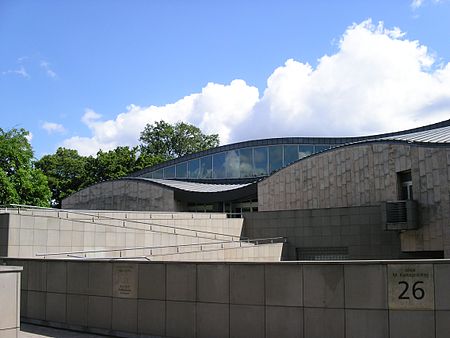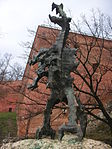The Polish Golden Age was the Renaissance period in Poland and the Grand Duchy of Lithuania, roughly corresponding to the period of rule of the King Sigismund I the Old and his son, Sigismund II Augustus, the last of the Jagiellonian Dynasty monarchs, until his death in 1572. Some historians reckon the Polish Golden Age to have continued to the mid-17th century, when the Polish–Lithuanian Commonwealth was ravaged by the Khmelnytsky Uprising (1648–57) and by the Swedish and Russian invasion. During its Golden Age, the Commonwealth became one of the largest kingdoms of Europe, stretching from modern Estonia in the north to Moldavia in the east and Bohemia in the west.
In the 16th century the Commonwealth grew to almost 1 million km2, with a population of 11 million. It prospered from its enormous grain, wood, salt, and cloth exports to Western Europe via the Baltic Sea ports of Gdańsk, Elbląg, Riga, Memel, and Königsberg. The Commonwealth's major cities included Poznań, Kraków, Warsaw, Lviv, Vilnius, Toruń, and, for a time in the 17th century, Kiev and Smolensk. The Commonwealth army was able to defend the realm from foreign invasion, and also participated in aggressive campaigns against Poland's neighbors. As Polonization followed in conquered territories, at least among the politically influential classes, the Polish language became the lingua franca of Central and Eastern Europe.During its Golden Age, the Commonwealth was regarded as one of the most powerful states in Europe. It had a unique system of government, known as Golden Liberty, in which all the nobility (szlachta), regardless of economic status, were considered equal and enjoyed extensive legal rights and privileges. One of the system's features was the liberum veto, used for the first time in 1653. The nobility, comprising szlachta and magnates, made up some 8-10% of the Commonwealth's population.












